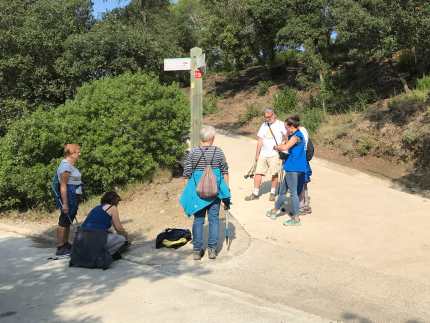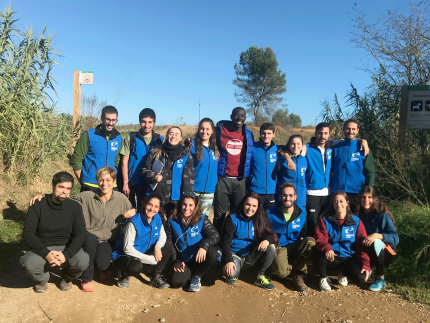Affluence, frequentation and characterization of visitors at Collserola Nature Park, Spain
March 12th, Barcelona - A comprehensive analysis on visitor flows has been undertaken at Collserola Nature Park, in Spain, in line with some of CEETO project Pilot Actions.
Collserola Nature Park is a periurban protected area located at the doors of Barcelona, one of the most visited touristic destinations worldwide. The human pressures that this park is subject to, both from resident visitors and tourists alike, are therefore very high.
On March 12th of the present year the results of the second phase of a assesment study of visitors affluence in Collserola Nature Park were presented. These results are based on data series collected during 2017 and 2018 by PhD. Estela Inés Farías and PhD. Serni Morera from the National Institute of Physical Education of Catalonia (Institut Nacional d'Educació Física de Catalunya - INEFC, Centro de Lleida) in collaboration with volunteers from the same institution.

Visitors affluence results presentation at Collserola Nature Park - Photo by EUROPARC Federation
The objectives of this study were, on one hand, to estimate how many people visits the park along the year and to identify a generic visitor profile that allows to establish possible relations between the profile and the impact that visitors have on nature. For the study, the whole park extension and its different access points were divided in 8 sectors and a total of 32 points of control with counters were set across. The study covered an extension of 5,087 hectares, 62% of the park´s territory, with 15,000 uses recorded and 1,561 questionnaires performed.

Interview to visitors at Collserola Nature Park - Photo by Estela Farías
Each sector was connected to a counter, and each counter results were adjusted using a correction factor to avoid the double counting (person going in and out through the same counter) and discriminate cars, bicycles, and other factors that could be data misleading. The correction factors were set for each counter according to parameters such as its location and accessibility, and based on constant use of the park along the year. The estimate of visitor affluence to the park was then calculted by summing up all the corrected data from the counters, yielding an average of 4.725,000 visits per year.

Volunteer team that helped with the visitors flow assessment - Photo by Estela Farías
On the other hand, the generic visitor profile identified belongs to a person aged between 35 and 54 years old (52% of the interviewed), male gender (67%), resident of Barcelona (35%), with universitary studies (56%) and a high level of awareness regarding the protection status of the park (88%), although only few visitors are aware (18%) of the impact they can produce on the environment. Furthermore, the generic visitor does a frequent use of the park (60% of them visit the park it on a weekly basis), especially during the mornings (73%) of non-working days (62%). The access to the park is done mainly on foot (39%) and individually (36%). To end with, the motivation of the visits, why people comes to the park, showed to be lead by the will of the people to get closer to the nature, to practice sports or to relax and disconnect.
Similar actions are being undertaken within CEETO Pilot Protected Areas, such as Medvednica Nature Park in Croatia, the UNESCO Biosphere Reserve Southeast Ruegen in Germany, the UNESCO Biosphere Reserve Salzburger Lungau in Austria or the Nirano´s Mud Vulcanoes in Italy.
The data collection on visitors affluence to Collserola Nature Park will be continued during this year 2019, and further information will be available soon. For further information, please stay tuned on CEETO news.
